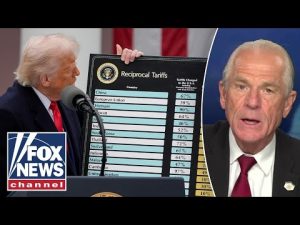**Government Aid: The Strange Journey of Your Tax Dollars**
In a world where tax season often feels like a game of hide-and-seek with your hard-earned money, the journey of U.S. aid can seem like a riddle wrapped in a mystery, sprinkled with a dash of absurdity. If one had to break it down, they might say it starts when you, the taxpayer, fork over some of your cash to the government. Think of it as a somewhat less-than-enthusiastic donation to an organization that might just be run by your well-meaning but slightly confusing uncle.
Imagine this: after handing over twenty bucks, you wake up to find that only ten of those dollars will be used for the lights and heat over at the bureaucratic headquarters. The other half mysteriously vanishes into the coffers of an NGO with an eccentric name—let’s say, Ro Shambo for World Peace. At this point, you might be thinking about how your money could be spent in better ways, but alas, your taxpayer status means you’ve signed up for the wild ride that is government aid.
Here’s where it really gets eyebrow-raising. Instead of using those funds to support local businesses or improve public services, the government decides it’s a grand idea to have a small business owner kicked in the shins—figuratively, of course. It’s as if someone looked at your donation and said, “You know what? This cash would be much better served by giving one of our entrepreneurs a good ol’ wallop!” That’s right; they want to give your small-business cash to an NGO to, let’s say, kick a local entrepreneur in the proverbial nuts. Why? Because that’s how they believe they can create “change.”
But wait, there’s more! As absurd as it sounds, the focus shifts to “helping” people on foreign shores, such as those in Somalia, where a startling 40% of their GDP comes from U.S. aid. The idea is noble; helping those in need is always a commendable goal. However, sometimes it feels as if the execution leaves much to be desired. With money flowing like a river into organizations with questionable methods, it poses a serious dilemma: Are we really helping, or are we just kicking the can down the road?
Now, if the government were to get a little too involved in these shenanigans, that could spell trouble. Imagine the scandal if a government employee decided to shake things up with some questionable tactics! But fear not! Non-government organizations are free to operate under their own set of rules. This means they can keep requesting more funds while offering up ineffectual solutions in return. You may not get anything back for your contributions, but hey, at least they’re asking for more donations—because who doesn’t love a little “auditing” drama when funds run dry?
So, here we are, in a surreal situation where taxpayers are the patrons of a bizarre performance that may look like aid but feels like something else altogether. The bottom line? Understanding the journey of your dollars is crucial. While the goal of helping others is as noble as they come, one might hope for a little more transparency and a lot less kickback in the process. After all, isn’t it time to demand that our tax dollars serve a purpose we can all stand behind—preferably without any metaphorical nut-kicking involved?







